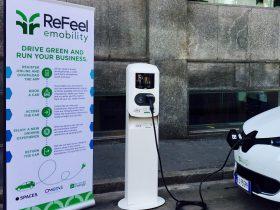Innovation is at the forefront of smart and sustainable mobility development. An Intelligent Transportation System (ITS) can meet the urban mobility challenges head-on. Cities can reinvent their transit networks using ICTs and IoT-enabled platforms to build smart mobility systems that offer creative, tech-driven solutions for different mobility operations, including traffic management, parking management, etc. Let’s find out which cities have the smartest transport.
ITS systems have already optimized several city transit networks through a technical and organizational overhaul. But, in particular, the following four cities have witnessed an incredible smart mobility transformation.
1. Barcelona, Spain
First up on the list is Barcelona! This city has often emerged as the world’s smart mobility leader, thanks to the wide-scale implementation of IoT systems in the city’s transportation infrastructure. Every street in Barcelona has LED-based streetlights connected to a network of sensors.
These sensors can measure temperature, pollution, foot traffic, etc. to adapt to dynamic traffic needs and cut down on energy usage during off-peak hours. This network of smart streetlights complements the city’s intelligent traffic light network that provides special “green light,”traffic-less routes for emergency services like ambulance, fire trucks, etc.
In Barcelona, smart car parks are the bedrock of the city’s mobility sector, generating a revenue of 36.5 million Euros annually. The city’s smart parking system uses wireless sensors embedded beneath the roads to guide drivers to vacant parking spots via Smartphone apps, saving both time and fuel lost to cruising. And parking facilities charge demand-based tariffs for enhanced revenue generation.
Furthermore, Barcelona’s enviable bus transit system is the smartest in the world. The city’s bus network uses an orthogonal grid scheme to promote intermodality i.e., combining different modes of smartest transport for seamless mobility. Every bus stop placed strategically to provide a connection between bus lines, tram lines, bicycle lanes, metro lines, etc. These bus stops are equipped with interactive touch screens that run on solar energy to display bus arrival timings.
2. Vienna, Austria
Renowned for its imperial sites, cozy café houses, and wine taverns, the city’s smart transit system also adds to the Viennese charm. Vienna relies on multimodal and cooperative systems to deliver seamless citywide connections. While cycling and walking are encouraged here, residents can also leverage a transparent bike-sharing network, pedestrian zones, and dedicated travel lanes to curb carbon emissions and road congestion. No wonder, Vienna has been leading the “quality of life” index since 2008.
Meanwhile, significant investments in public transits engineer Vienna’s drive to lower Motorized Individual Traffic (MIT) in the city – by 2025, it aims to decrease the MIT amount by 20%. Vienna’s enviable public transport network sprawls the entire city with five underground metro lines, 29 tramway lines, and 127 bus lines.
City’s metro system transports 1.3 million commuters every day while most of the city’s population lives within 300m or less from several public transits. Most of these services are easily navigable through the Smartphone app called ‘Quando.’ Commuters get updates about the next subway train, bus departures, and tram routes for easy travel route mapping.
In the city’s goal to become more “livable,” advanced technical provisions in public transits are available to those with special needs. They can use multi-sensor guidance systems, custom-designed route planners for hassle-free commutes. Thanks to such technology-enabled features, Vienna boasts of the smartest transport network.
3. Tokyo, Japan
Tokyo is home to over 10 million people, yet moving around the city is remarkably simple and easy. The city hosts efficient, IoT-enabled railway lines and bullet trains that can go up to 600 Km per hour for faster citywide trips; Tokyo’s Yamanote Line, a loop line that runs around the metropolitan’s center, can speedily transport 34 million passengers per week.
Payment for public transits is secure, thanks to IC cards. An IC card is a prepaid, rechargeable card that can be used to pay fares on public transports and at several shops, restaurants, convenience stores, and vending machines. Pasmo and Suico are the IC cards for Tokyo’s railway, bus, and subway users. Easy to top up, these smart cards are incredibly convenient for traveling around the city.
Japan’s public transportation systems, primarily its railway system, operates using smart IoT technology. The public transit systems undergo a “condition-based maintenance” wherein data is collected and analyzed to check equipment status. Based on the intelligence received, railway operators identify weaknesses, schedule repairs, or predict operational issues to reduce the number of maintenance closures.
To facilitate smart applications for public use, Tokyo uses an open public platform called Cpass.io that connects the IoT devices, several sources of big data, and government data together. A Cpass allows Tokyo’s local government and other government bodies to share data with the public and other businesses. The data shared includes the number of vehicles in the city, accidents, traffic flow, etc. to encourage technological applications for public use.
4. London, United Kingdom
In London, 2 million people ride the “Tube” every single day. Being one of the world’s oldest and busiest subway systems, the London Tube meets its maintenance and operational needs via smart mobility solutions. The Tube’s sprawling matrix uses network-enabled sensors embedded in CCTV cameras, PA loudspeakers, subway tunnels, etc. that help collect operational data.
Then, central control centers use the accumulated data to monitor equipment issues and deploy maintenance teams to make quick repairs and avert maintenance-based delays. Additionally, Transport for London (TFL) – Greater London’s local body responsible for transportation – provides free Wi-Fi on the underground networks to track user’s journeys from start to finish and analyses collected data to improve the efficiency of the subway system.
Furthermore, London developed a Heathrow Pod system to handle the road congestion caused by heavy traffic flow at the city’s Heathrow airport. It is a zero-emission, rapid transit system that uses Heathrow Pods (a fleet of automated, driverless electronic vehicles) to transport customers between airport terminal 5 and the business car park in just 5 minutes. The system consists of 21 public pods in total, eliminating the need for bus travel.
What tops all this is that most of London’s smart mobility projects are user-friendly. For instance, London initiated the “Transport for London Platform” that allows people to plan their journeys through multi-modal smart mobility options online. Users can book a trip in the cable car, rent a bike, navigate travel routes, etc. on said platform, facilitating smoother trips around the city.
The Need of the Hour
The Smartest transport solutions are necessary for curbing the cities’ mobility challenges. Besides, new, innovative, and data-driven intelligent mobility solutions can accrue long-term economic and environmental value to municipalities, policymakers, businesses, and, most of all, to travelers. After all, the primary objective of the smartest transport system is to enhance city life quality.
Link: https://blog.getmyparking.com/2021/06/08/smartest-transport-which-cities-have-it/
Source: https://blog.getmyparking.com

















Leave a Reply